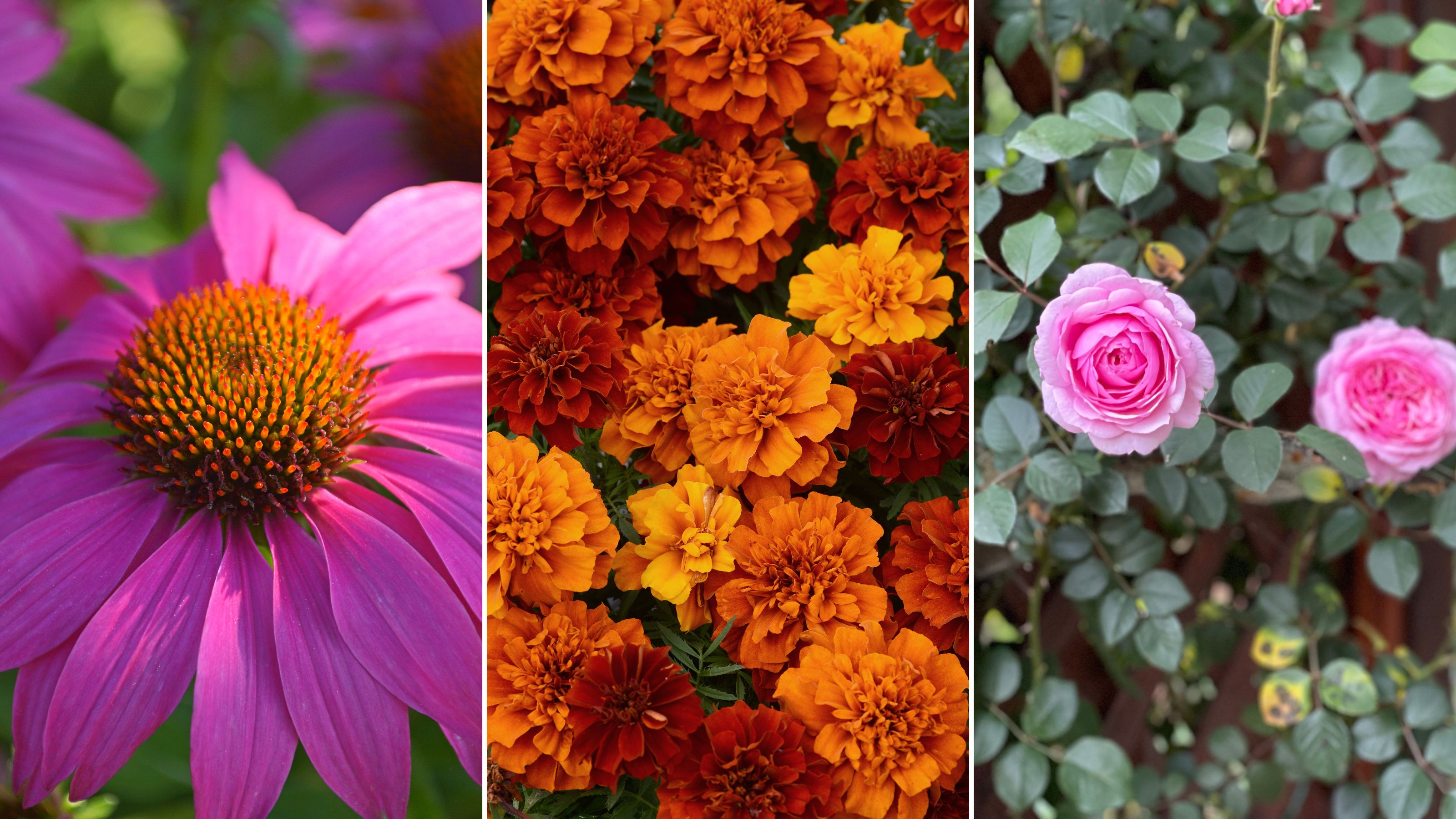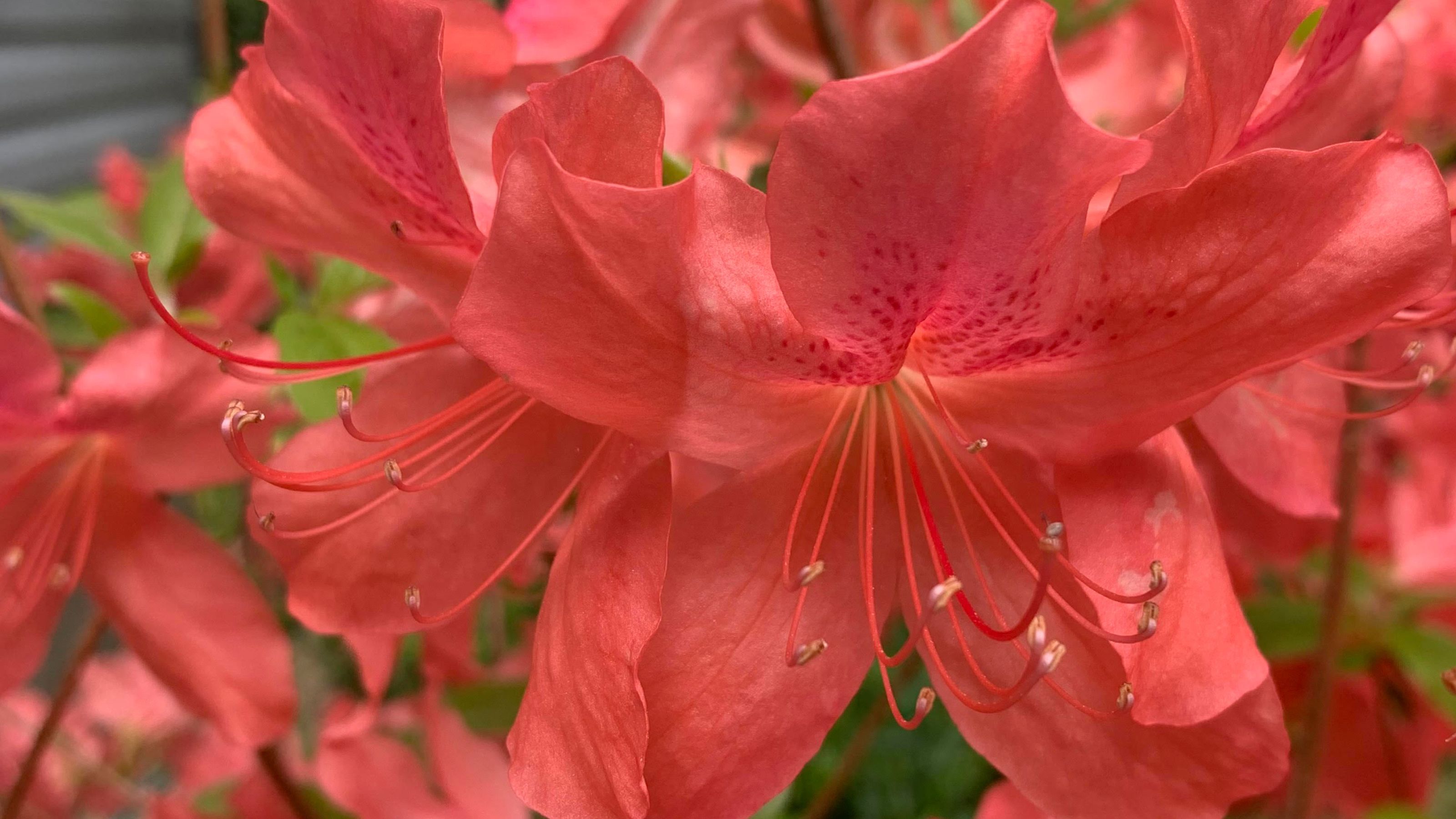
Working with the environment, and creating a harmonious haven are aims that have guided Barbara Jeremiah and Kay Linnell over the past 26 years, in creating their peaceful garden at Brick Kiln Cottage in the Hampshire countryside.
The two acres stretch out from the characterful cottage that was once home to a brick master. They mostly comprise a natural bluebell wood, and enhanced areas of lawn and hollows that were the old clay pits.
Find out how they transformed the garden, then see more of our real home transformations. Find out how to plan and design the perfect garden for your home, too.

When they arrived, however, nothing had been done in the wood for approximately 40 years. ‘The whole place was generally derelict and overgrown,’ says Barbara.
The setting was clearly in good hands, though. Barbara is a liveryman of the Worshipful Company of Gardeners and a talented textile designer, so guided the restoration with an innate artistic eye.

A perimeter path was cleared around the mostly oak and beech wood, leaving the inside a natural habitat that attracts a range of wildlife. The ethos has been to manage the woodland and garden, while also achieving a space in which to relax.
Find more advice on how to create a wildlife friendly garden in our guide.

A rose- and hop-covered arbour presents a quiet place to sit among the bluebells. The pebble garden in front of it was made by digging up old tree roots and weeds then covering with a liner. Clipped buxus spheres encircle it.
Paths now meander through the old pits, swathes of Allium ursinum, or wild garlic, scramble over the banks, and native ferns have been added to fill little gullies. Stumperies and rustic arches have been formed with the lighter fallen timber and roots.
Find out more ways to create a eco-friendly garden.

Two rusty hens provide a fun focal point by the cottage garden fence

Lavender planted in some old wellington boots

A tiny potted strawberry crown adds a touch of whimsy
An area has been set aside as a wild garden, where indigenous and self-seeding plants are given free rein: from primroses, primulas and periwinkles, to borage, wood cyclamen, Alchemilla mollis and Geranium himalayense.

'I encourage the bluebells to multiply by moving them and planting in patches around the woodland, under trees, or at eye level on the top of hollows or in tree roots,’ explains Barbara.

A ginger tom oversees the gardening
Decorative rustic detailing completes the garden, with sawn logs, tree stumps, old bottles and pottery.

Epimedium spills out of the rough-sawn raised container
Reducing and caring for an old yew in the garden gave Barbara logs to build rustic arches that work well with the old shepherd's hut

Reducing and caring for an old yew in the garden gave Barbara logs to build rustic arches that work well with the old shepherd’s hut

Rustic arch into the bluebell garden
Beside the house, a raised fruit bed and vegetable plot offer a variety of produce, and are backed by espaliered ‘Charles Ross’ and russet apples. A path through it has been made from bricks, each of the holes filled in with sand and then a penny placed on top.
Find advice on how to create a kitchen garden.

The path in the vegetable garden is made from bricks, the round holes filled with sand and a penny placed on top
Behind a little picket fence is a rather wonderfully nostalgic cottage garden billowing with bee-attracting flowers and herbs. Here you’ll find hollyhocks, lavender, daisies, nasturtiums and delphiniums coming to the fore later in the summer.
For advice and inspiration on how to create your own cottage garden see our guide.

Full of bee-attracting flowers and herbs, the little cottage garden is a lovely spot in which to sit for a moment’s contemplation
‘Each year we make seats, tables and arches from the wood from our trees, coppice the young branches for flower stakes, use wood for the fires in the cottage, chippings for the paths…’ says Barbara, as she contemplates the continued evolution of the garden.

Key plants included
- Allium ursinum, or wild garlic
- Bluebells, snowdrops, daffodils, foxgloves
- Primroses, primulas and periwinkles
- Borage, wood cyclamen
- Alchemilla mollis
- Geranium himalayse
- Campanula latiloba
- Hollyhocks, lavender, daisies, nasturtiums, delphiniums
- Jasminum nudiflorum
- Lavatera, honeysuckle, Passifloral incarnate
Read more:
Join our newsletter
Get small space home decor ideas, celeb inspiration, DIY tips and more, straight to your inbox!
-
 The 7 flowers to plant in August, according to gardening gurus
The 7 flowers to plant in August, according to gardening gurusKnowing what flowers to plant in August isn't always so clear-cut. But that's why we called in help from pro planters — here's what they said to pot.
By Becks Shepherd
-
 The 7 plants to prune in August — and the 2 pieces of greenery you shouldn't touch
The 7 plants to prune in August — and the 2 pieces of greenery you shouldn't touchWondering what plants to prune in August? We asked a gardening expert for their top tips plus info on what pieces of greenery to avoid pruning this month
By Becks Shepherd
-
 Do you need to deadhead azaleas? Top tips for pruning these flowering shrubs
Do you need to deadhead azaleas? Top tips for pruning these flowering shrubsWondering whether you need to deadhead azaleas? We asked a gardening expert for their top tips for looking after these blooms
By Becks Shepherd
-
 Impactful landscaping ideas for small backyards that will transform your space — 10 ideas to inspire
Impactful landscaping ideas for small backyards that will transform your space — 10 ideas to inspireFrom wood paneling and a lick of paint to planters and fire pits, our landscaping ideas for small backyards will refresh your space
By Sophie Warren-Smith
-
 The 2024 sustainable landscaping trend is the only one worth trying, gardening pros reveal
The 2024 sustainable landscaping trend is the only one worth trying, gardening pros revealLooking for a new landscaping trend to try? We've asked designers for their top one for 2024, plus picked out essentials to help you get started
By Eve Smallman
-
 These 6 tropical landscaping ideas will give your space a resort feel
These 6 tropical landscaping ideas will give your space a resort feelOur tropical landscaping ideas will uplift your backyard with water features, lush plants, vibrant shades, and tactile materials in bright colors
By Sophie Warren-Smith
-
 10 houseplants that are not toxic to cats — plus expert advice on keeping your pets safe
10 houseplants that are not toxic to cats — plus expert advice on keeping your pets safeKeep your four-legged companion safe by choosing these houseplants that are not toxic to cats, and learning the dangers of those that are, according to veterinary experts
By Holly Crossley
-
 14 lawn edging ideas that will add definition and style to your backyard
14 lawn edging ideas that will add definition and style to your backyardWant to neaten up your lawn with lawn edging ideas? From fresh flowers to laidback bricks, we've scouted out materials and styles that look brilliant
By Eve Smallman